
The congressional appearance last month by Nemat Shafik, the president of Columbia University, was a breathtaking “What was she thinking?” episode in the history of academic freedom. It was shocking to hear her negotiating with a member of Congress over disciplining two members of her own faculty, by name, for things they had written or said. The next day, in what appeared to be a signal to Congress, Shafik had more than a hundred students, many from Barnard, arrested by New York City police and booked for trespassing—on their own campus. But Columbia made their presence illegal by summarily suspending the protesters first. If you are a university official, you never want law- enforcement officers on your campus. Faculty particularly don’t like it. They regard the campus as their jurisdiction, and they have complained that the Columbia administration did not consult with them before ordering the arrests. Calling in law enforcement did not work at Berkeley in 1964, at Columbia in 1968, at Harvard in 1969, or at Kent State in 1970.
What’s more alarming than the arrests—after all, the students wanted to be arrested—is the matter of their suspensions. They had their I.D.s invalidated, and they have not been permitted to attend class, an astonishing disregard of the fact that although the students may have violated university policy, they are still students, whom Columbia and Barnard are committed to educating. You can’t educate people who cannot attend classes.
Denne historien er fra May 06, 2024-utgaven av The New Yorker.
Start din 7-dagers gratis prøveperiode på Magzter GOLD for å få tilgang til tusenvis av utvalgte premiumhistorier og 9000+ magasiner og aviser.
Allerede abonnent ? Logg på
Denne historien er fra May 06, 2024-utgaven av The New Yorker.
Start din 7-dagers gratis prøveperiode på Magzter GOLD for å få tilgang til tusenvis av utvalgte premiumhistorier og 9000+ magasiner og aviser.
Allerede abonnent? Logg på

MING HAN ONG
Thadeus had never offered to take Johnny Mac out for a meal before. This is new, Johnny Mac says, grinning. For twenty-five years, Johnny Mac worked as a tenant-rights lawyer. He is a fount of varied and surprising knowledge.
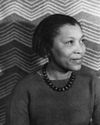
ZORA NEALE HURSTON'S CHOSEN PEOPLE
What a long-unpublished novel reveals about her magnificent obsession.
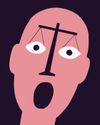
FEAR AND LOATHING
Are all our arguments really over who's harmed?
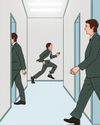
ODD JOBS
\"Severance,\" on Apple TV+.
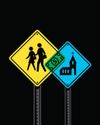
ON A MISSION FROM GOD
Inside the movement to redirect billions of taxpayer dollars to private religious schools.

MAKE HIM LAUGH
How Lorne Michaels's sensibility governs \"Saturday Night Live.\"
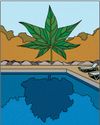
TABULA RASA
“Bleb” is worth eight points in Scrabble. Thought you might like to know. I have known the word since Wednesday, June 11, 1958, when I learned it from a company physician at Time Incorporated, in Rockefeller Center. He said I should have been hospitalized four days ago, but there was nothing much to do about it now, go back to work.
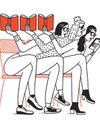
WELCOME TO OUR FIRST/FINAL BOOK CLUB!
Thank you, everyone, for coming to our first/final book-club meeting. Apologies for how long it's taken us to settle on a date, but in between work, kids, and the pretense of joining adult recreational sports leagues, it seems that we all have incredibly busy schedules.

THE POISON MACHINE
The talk-show host Yinon Magal's hard-line tactics.
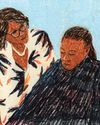
MEAN TIME
“Hard Truths.”